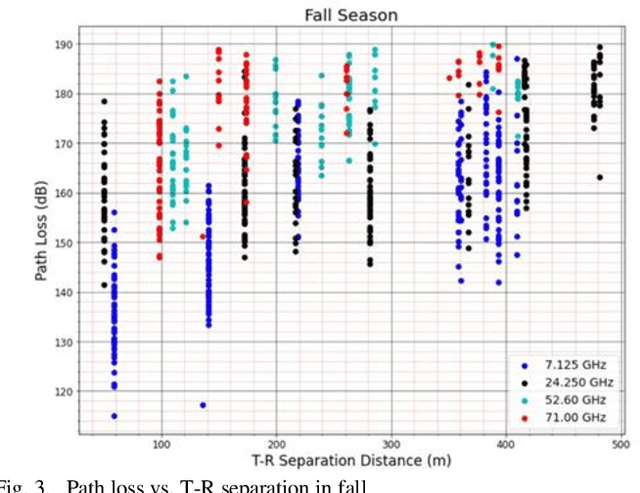Atmospheric Influence on the Path Loss at High Frequencies for Deployment of 5G Cellular Communication Networks
Paper and Code
Jun 02, 2023



Over the past few decades, the development of cellular communication technology has spanned several generations in order to add sophisticated features in the updated versions. Moreover, different high-frequency bands are considered for advanced cellular generations. The presence of updated generations like 4G and 5G is driven by the rising demand for a greater data rate and a better experience for end users. However, because 5G-NR operates at a high frequency and has significant propagation, atmospheric fluctuations like temperature, humidity, and rain rate might result in poorer signal reception, and higher path loss effects unlike the prior generation, which employed frequencies below 6 GHz. This paper makes an attempt to provide a comparative analysis about the influence of different relative atmospheric conditions on 5G cellular communication for various operating frequencies in any urban microcell (UMi) environment maintaining the real outdoor propagation conditions. In addition, the simulation dataset based on environmental factors has been validated by the prediction of path loss using multiple regression techniques. Consequently, this study also aims to address the performance analysis of regression techniques for stable estimations of path loss at high frequencies for different atmospheric conditions for 5G mobile generations due to various possible radio link quality issues and fluctuations in different seasons in South Asia. Furthermore, in comparison to contemporary studies, the Machine Learning models have outperformed in predicting the path loss for the four seasons in South Asian regions.
 Add to Chrome
Add to Chrome Add to Firefox
Add to Firefox Add to Edge
Add to Edge